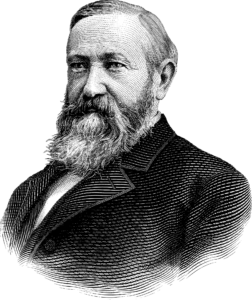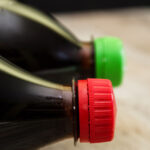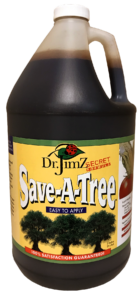Save-a-Tree- It’s Not Just For Trees!
Save-a-Tree- It’s Not Just For Trees!
Can you “cure” a sick tree by improving the soil? It seemed like a far-fetched idea several decades ago when Zamzow started giving their garden center customer’s a brown liquid fertilizer in used two-liter soda bottles. The product was so successful, especially for fruit trees and vegetable gardens, that customers soon had to bring their own bottles. By mid-summer the 55-gallon drum that contained the experimental batch was empty. Zamzow named the product Save-a-Tree and started marketing it.
We were a bit skeptical of this new product when Jos Zamzow approached us about selling this at Town & Country Gardens. That is until we tried some of it on a tree and some shrubs that were struggling a little bit, and Whoa… Did it ever work! Within a few weeks they were thriving. We began experimenting with it on things like raspberries, and tomatoes. The results were unbelievable. We were hooked! Within weeks of us putting it on our shelves, we had customers coming in telling us their stories of how incredibly healthy Save-a-Tree made their plants- huge leaves, flowers and fruit. Within a few years, Save-a-Tree became one of our biggest selling products, and it still is.
 Save-a-Tree’s most famous success story was in 1999 when the Harrison Tree, planted near the Idaho Capitol building in Boise in 1891 by President Benjamin Harrison, was dying and scheduled to be cut down. Dr. Jim donated Save-a-Tree. Even he said the tree had only a 50-50 chance of survival. However, the tree returned to health and grew more in one year than it had in the past three years combined. Unfortunately, it was later cut down to make room for the Capitol building’s expansion.
Save-a-Tree’s most famous success story was in 1999 when the Harrison Tree, planted near the Idaho Capitol building in Boise in 1891 by President Benjamin Harrison, was dying and scheduled to be cut down. Dr. Jim donated Save-a-Tree. Even he said the tree had only a 50-50 chance of survival. However, the tree returned to health and grew more in one year than it had in the past three years combined. Unfortunately, it was later cut down to make room for the Capitol building’s expansion.
Save-a-Tree’s base is sugar cane molasses, selected because it smells good,
does not attract ants and discourages nematodes, a type of parasitic worm.
Ingredients include nitrogen, phosphate and other nutrients. All ingredients are natural, and there are no animal byproducts. Save-a-Tree is manufactured in Nampa, Idaho.
Save-a-Tree helps in not only feeding the plants, but also nourishing the micro-organisms living in the soil. Healthy soil is the key to healthy plants, ensuring optimal growth and vitality. This innovative fertilizer increases the minerals and micro-nutrients in the soil, resulting in fruits and vegetables that taste exceptionally delicious.
Tests by microbiologists at Boise State University showed that 24 hours after an application of Save-a-Tree, there was an increase of 70 percent in beneficial bacteria in the soil. After a week, there was a 400 percent increase.
When we first started selling Save-a-Tree at Town & Country Gardens it was primarily for trees, especially trees that were struggling. But now, most of our customers are also using it as their primary plant food for fruit trees, berries, and vegetable gardens. People grow vegetable gardens for better flavor, better quality, and safer, healthier produce.
Guaranteed Analysis:
Total Nitrogen 4%
4% Water Insoluble Nitrogen
Available Phosphate 1%
Sulfur 3%
Derived from: Sugar Cane Molasses, Rock Phosphate Alfalfa, Magnesium Sulfate.
Suggested application rates:
Trees: 1 cup + 1 gallon of water per inch of trunk diameter.
Shrubs & Roses: 1/2 cup + 1 gallon of water per 2 feet of height.
Vegetables & Ground Covers: 1/2 cup + 1 gallon of water per 20 square feet.
Houseplants: 1Tbsp. + 1 gallon of water every time you water.
Lawns: 2 gallons + 6 gallons of water per 1,000 square feet.




